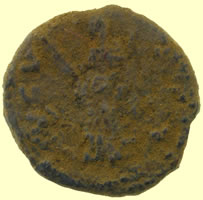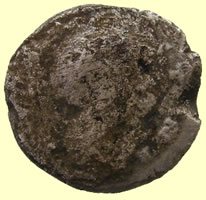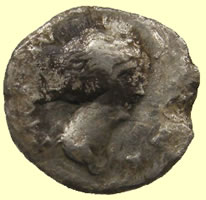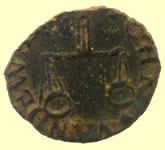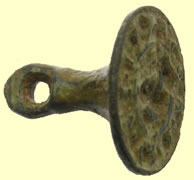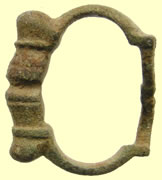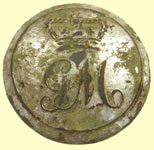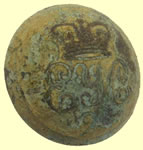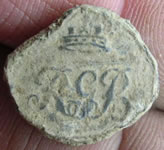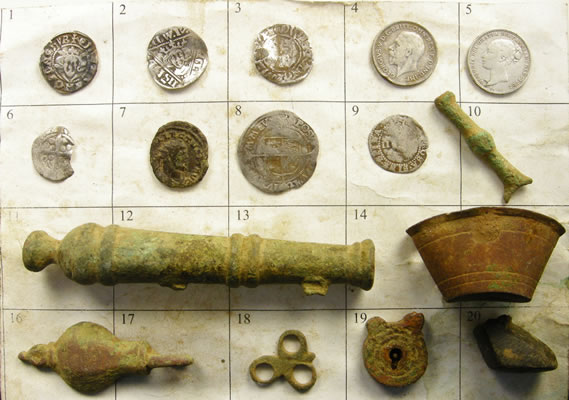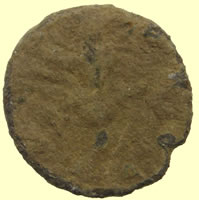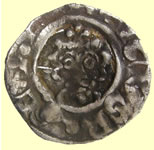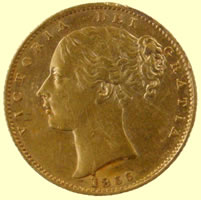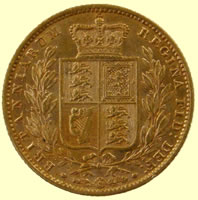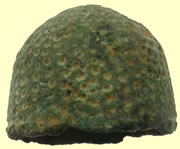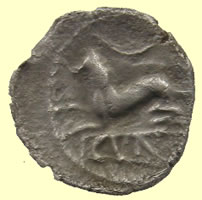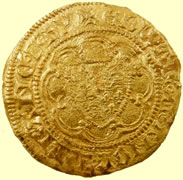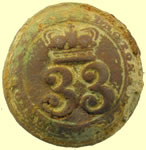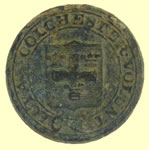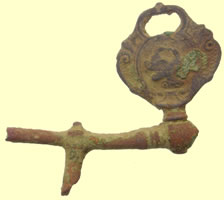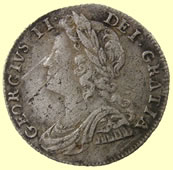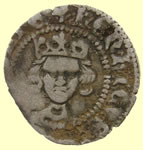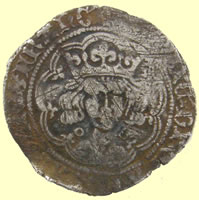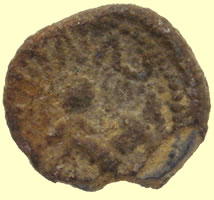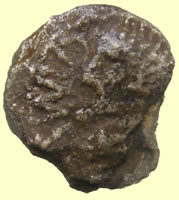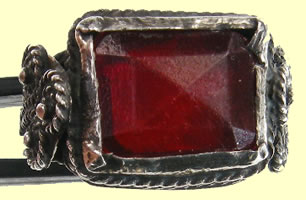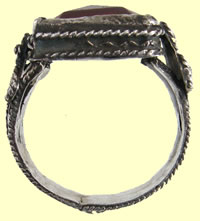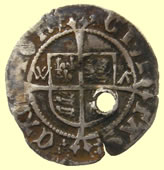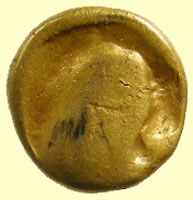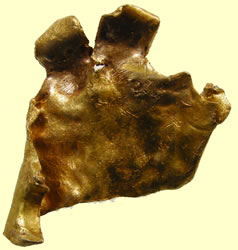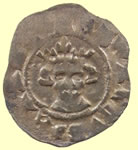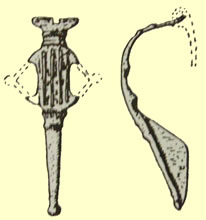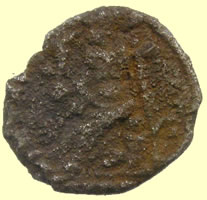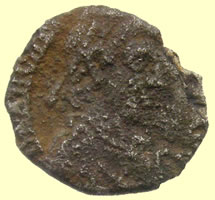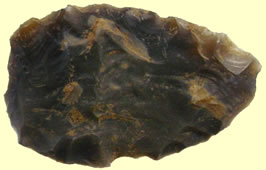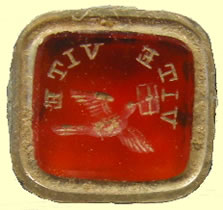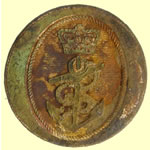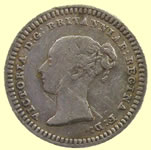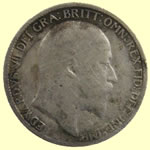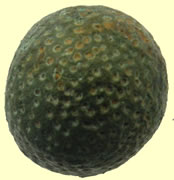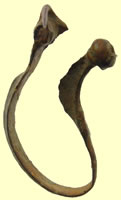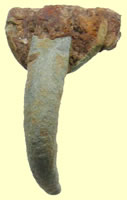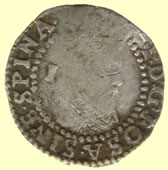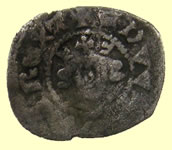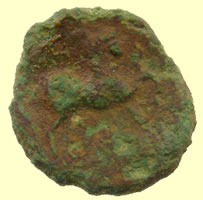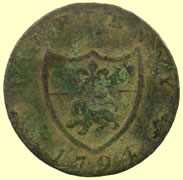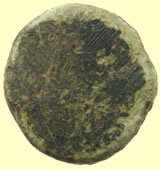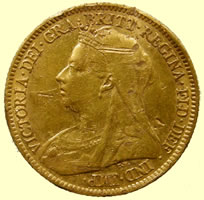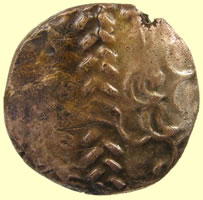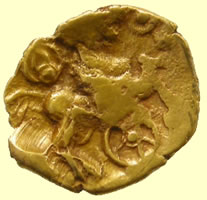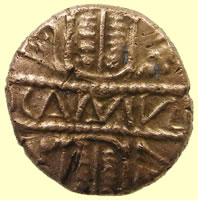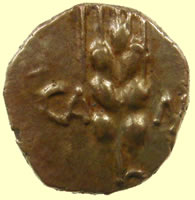

Metal detecting holidays in England with the World's most successful metal detecting club.
Twinned with Midwest Historical Research Society USA
Sept 2012 to Jan 2013 Archived news
|
29th Jan 2013 - 3 days to the kick off - Cooking ancient silvers and disclaimed treasures I hope the brilliant mild weather we are having holds out for the first team of guys that start the 2nd half of the season on Saturday. It is already 8C at 8am today and we have had bright sunshine and 10C days this week. I have now got a meeting date arranged at the museum next week to pick up all the disclaimed treasures and recorded finds.
Ancient silver 'cooker' and melted crust pics
I have been busy working on the guys currently 'cooking' ancient silver coin finds and some have made great improvement. It can take from just a week to in one case 2 years to finally melt of the 'horn silver' crust that grows on these coins. Some of the crusts are as hard as armoured plate and patience is a must when cleaning these suckers. I took a picture above of my set up. I use a hot plate and ceramic mugs with the mixture inside of lemon juice and olive oil which was advised by a Spanish chemist friend of Mark Lehman our Roman expert. The other picture shows the black crud that melts off the coins when you pour them into a bowl before you change the mixture. If the coins are very thick and crispy you need to change the mixture at least twice a week. The whole process can be very slow so don't expect instant results. The trick is cook and pick, always using a wooden toothpick so not to damage the coins.
I currently use a jewelers loop for close up work when tooth picking the coins but I thought it was about time to really invest in a state of the art stereo microscope for the club. The problem is there are thousands of different models and types out there to choose from is impossible to just pick one, so many different stands and lighting arrangements and getting it right first time is tricky. Luckily I have just found a local company that actually brings all the models to my office for hands on demonstration from the cheapie basic models to the serious top of the range units. This is brilliant as I can compare them side by side and really see what the difference in price and quality of lens etc makes. I can put Cal Jim's tiny crusty Saxon sceat coin below under each microscope and see a real comparison test. It is very important when choosing a unit that you can get your hands easily under the scope when cleaning the coin. It will be facinating to see what the real difference is between a £500 model and a £2000 unit.
As dug and 'cooking' pics
Primary Saxon silver sceat 600- 700 AD - sent to Fitzwilliam museum for recording and ID
Penn Dennis' crispy Roman silver is start to 'cook' up after being in the pot since March 2012 !! Still more crust to remove yet but I sent it off for ID. the obverse legend is DIVA FAVSTINA ("the deified" Faustina) and portrays her in the usual way with a fairly elaborate hairstyle, somewhat swept up in the back with a small bun at the top of the head. Faustina Sr.for him - a posthumous piece (as is the majority of her coinage) for the wifeof Antoninus Pius. She died in 141, only 3 years into Antoninus' longreign, and had significant posthumous coinages struck in her honor, first byAntoninus Pius, then later by Marcus Aurelius - her son-in-law. Mark
Crispy Roman silver is start to 'cook' up after being in the cooker since March 2012
Crispy Roman silver 'cooking' to remove crust
Some detail coming through on this early BC Roman silver
|
||||||||||||||||||||||||||||||||||||||||||||||||||||||||||||
22nd Jan 2013 - Cooked Roman ID's - Exports finished - more fixed coins - disclaimed treasures Phew, finally got all the export license applications completed and in the post. Just in time before the season starts again in just 10 days. The final musket ball count towards the free competition is 730 for the half season so far. It will be interesting to see how many more we dig from Feb to April as we have another 50 + new fields to start from scratch on. Most of the members are still in with a shout to win next season free trip so check out your guess here. Competition page I had an e-mail in from the museum prior to our next meeting detailing all the disclaimed treasures that are going to be ready for pick up. I also got a list of those finds that are currently with the museum undergoing evaluation and recording which should also be ready for pick up shortly. Now we have a new permanent FLO in place finds should move more quickly. 2012 T21 G. Arnold
I have been 'tooth picking' at the Roman, Celtic and Saxon silver coin 'cooking' to remove their crust and a couple of them have made great improvements, see pictures of before and after shots below. I still more cooking to do yet before they are finished but Mark has managed to ID them OK.
1362 - 1369 Edward III hammered gold half noble - Treaty Period cross potent- annulet before Edw Obv + EDWARD DEI G REX ANGL 19.16mm, 1.98g I have the next batch of our bent hammered silver and gold coins ready to take to the goldsmith this week. Bav Terry also wants his disclaimed medieval gold ring repaired, this guy does amazing work, check out the link below http://www.colchestertreasurehunting.co.uk/C/coinstraightening.htm I have updated more of the individual find pages below with finds from the first half of the season.
|
||||||||||||||||||||||||||||||||||||||||||||||||||||||||||||
16th Jan 2013 - More ID's and exports - New land update - New self catering accommodation
I am down to the last couple of export licence preparations which is a good job as the guys are out there searching again in a couple of weeks so it all starts again !! I have posted more missed finds from the pouches and posted them on the Oct 2 finds page.
I spoke to one of our main self catering Barn owners this week and their 2nd new Barn conversion is now ready for use. http://www.essexfarmholidays.co.uk/newbarn.html It is a two, twin bed roomed house with all the mod cons. Everything is brand new as to the standard of the link above and a very good size. I wandered around it last year with Min Mindy while it was being totally gutted and renovated. There are no actual pictures taken of it yet but it is now available to rent for small teams of 1 to 4 guys from Feb 2nd. It is 100 yards from our main triple lodge Barn we rent, has a common club house/cleaning room with the other Barn and is 1/2 a mile from our sites. For this accommodation it is the same as with all our self catering teams. You rent your own transport from the airport, I supply all the kit I posted on 10th Jan and you come and go on all the land as you please and for as many hours as your arm holds out. I supply all the usual support by taking away your finds to ID and photo, report any treasures or hoards to museum and landowner. I later drop off all important finds for recording at the museum and then prepare all the export paperwork when you have left. The only thing you have to do is find food as I even supply diggers. I have now plotted the new site we were offered last week to hunt on the AO master maps which you get a loan of when you arrive. I lied as I thought it was just 15 fields but it actually turns out to be 18, varying from manageable size to absolute monsters. I also took a long drive around our other new plots and several of the fields we could not hunt due to high leaf crops and stubble in Oct are now freshly ploughed and rolled. There are several that are still stubble which means they will come on line from now to April, currently there are around 500 fields ready with tiny green shoots just appearing on them for members to choose from. I just received back another large batch of approved licenses and the list of names is published on the members forum. I am still waiting for a meeting date from the new FLO to pick up recently disclaimed treasures and recorded finds. Updated the competition page with the latest musket ball count of 715 found so far. The guys have been working on the revised livery button page to try and ID some of the missing families, Can Bill just sent me the two below he managed to get an ID for.
|
||||||||||||||||||||||||||||||||||||||||||||||||||||||||||||
10th Jan 2013 - More new site pages and ID updates I went to Staples today to get a load of office supplies to update our AO laminated maps with all the new site fields for Feb. I was surprised to find the store is closing down and everything was heavily discounted so I picked up a load more office supplies we use regularly. Luckily there is another huge Staples the other end of town so I can still get all the new maps laminated ready for the kick off. The first 'Barn' team of 7 guys arrives on the 2nd Feb so I got all the supplied 'Barn kit' loaded ready for the guys. Each self catering Barn gets the full kit below to make their stay as comfortable as possible. We now have a huge store of 30 + mixed style long handled diggers which are loaned free of charge to members during their hunt. Supplied kit - free of charge to each Barn team 7 GP3600 professional digital walkie talkies Updated the competition page with the latest musket ball count of 651 found so far. More updates to the site including a new Medieval buckle page separating these earlier examples from the rest.
I have created a new Livery button page putting them in to type order leaving Transport, police etc now on their own page. There is a a great new button site link below that could help us identify more of these types by family. Using this new site will be a long job to allocate names to all the unknown buttons. https://sites.google.com/site/liverybuttonsidentified/ Steve has been updating me with more of our military buttons ID's below, interesting that what look like 3's are actually fancy E's.
In your numbered section under 33 you have two buttons there that are actually the East Essex Militia, its two fancy E's rather than 3's. The East Essex Militia were formed in 1759 and became the Essex Rifles Militia in 1853 during this period they had five styles of known button of which this is the forth, so date wise you can go 1760-1853 or probably for this style c1810 Steve
On your 3rd section is a pewter button with letters in it. This is actually being viewed upside down, the letters are in fact EN, and the button is to the East Norfolk Militia. Its early but hard to say when, the unit was formed in 1760 and this is the second known type so c1780-1800 is probably about right Steve
|
||||||||||||||||||||||||||||||||||||||||||||||||||||||||||||
8th Jan 2013 - More new land for Feb - Saxon gold donation - funny Hitler detecting video - Ron on the radio I have uploaded more export find lists and pictures to the members forum, still got a dozen more to process yet before the Feb 2nd kick off. Our very own Chicago Ron will be on this up and coming radio show, thanks to Col Rob for the heads up and posting the link. New Internet Radio Show - Metal Detecting and related...upcoming guest Chicago RonI received an email about this and wanted to share it...
Treasure Case No: 2010 T169. Saxon Gold cloisonné fitting from Colchester area , Essex PAS ID: ESS-9E6D71 Date: Early Medieval, 870 -1050 AD Description: This roundel is about the right size to come from a finger-ring, and circular roundels of similar size are known from tenth-century gold finger-rings such as PAS-D681D8, LON-3478C7, and two noted in Treasure Annual Reports but not yet on the PAS database (TAR2003, no.110; 2003T 24 and TAR2001, no. 46; 2001T11). All of these depict a four-petalled flower, but different designs are found in base metals on LVPL500 (a four-cell pattern with alternating red T-cells and blue mushroom cells) and LON-A2FD02 (a rectangular field with two petal shapes). Discussion: These enamel settings are well known from Continental workshops, but the number now known from the 9th to 11th centuries in England (including very high quality work such as the Alfred Jewel) shows that they are also likely to have been made here. Dimensions: Weight: 1.25g Consequently, in terms of age and as the object contains a minimum of 10% precious metal it qualifies as Treasure under the stipulations of the Treasure Act 1996. Helen Geake The very important Saxon gold enamelled roundel find above was declared treasure and had it's valuation recently. Unfortunately Colchester museum does not have the budget to acquire it for display. Both the landowner and Ill Mark, the finder, have generously decided to donate it to the Colchester museum and wave the reward as it is such an important and rare discovery and feel it should be in the museum on display. I spoke to the Treasure registrar at the British museum to inform them today of the donation and while I was on the phone discussed the current position of our other reported treasures and hoards currently undergoing the treasure process. Tenn Brad's Saxon gold cut shilling hoard find below will finally be having it's valuation committee stage this month as it had previously been declared part of the hoard we found the year before.
(EMC 2011.0059) Merovingian Saxon gold coin - cut shilling I had an unexpected call last week from one of our landowners and over Christmas his auntie has asked us to search her land also from February. It is 500 acres tagged on to his own existing 2000 acre site we currently search. I had a meeting with the farmer yesterday and got more details and maps. It appears to be 15 fields from manageable to monster sizes and is too big to fit onto our existing A4 personal laminated maps guy carry with them out in the field. It however fits OK onto the large AO master maps team leader get so I will be rushing off to Staples to get another batch laminated for the kick off on Feb 2nd. That takes to total of new land from Feb to 50 + plus our exiting 450 fields so the guys will be running around like headless chickens to try and cover that lot. In the USA there appears to be lot of back lash about metal detecting programs which appear to be scripted and Jim posted this very clever and funny video on the forum showing Hitler raving about these shows and being in his parks. http://www.youtube.com/watch?v=FDRjIy3yP48
I have been updating the site with more finds from the 1st half of the season and decided to update the buckle page. The page was just too huge and in a total mess so I have created 3 new pages and put them into date order and type. Some overlap each period so but I have still split them over 2 pages to reduce the size. I am still working on the Roman to medieval page and will publish that shortly. 16th/17thC buckles up to present day - page 2 Roman to medieval - under construction |
||||||||||||||||||||||||||||||||||||||||||||||||||||||||||||
3rd Jan 2013 - More exports and ID's - Org Ed's silver half dollar video - New FLO in post Happy new year to all our members and readers, hope we find a monster hoard in the 2nd half of the season that kicks off in under a month now. We have over 100 new fields without a foot print on them for the kick off so lots of serious hotspotting to do. With the surprise resignation of the Essex FLO last year the whole system is kind of backed up. The last two important groups of finds I took in for recording , Saxon Medallion, Axe heads, Viking strap ends etc have yet to be returned. All the treasures I dropped off are delayed and the disclaimed treasures waiting at the British Museum are also delayed. For those waiting for returned treasures etc it is good news as I got an e-mail in before Christmas and a new full time Finds Liaison Officer is now in post. I have dropped the museum a mail to get an update on the current state of play on the finds outstanding. Hopefully we will be getting them back before the 2nd Feb kick off.
Seated Liberty Half Dollars. My first video attempt! http://www.youtube.com/watch?v=5oeIzf0jD3Q Org Ed just posted a massive find he just made in Oregon on his vid camera, a hoard of 5 early USA half dollars, enjoy.
Medieval beehive thimble and a neat set of crotal bells
I have uploaded more export find lists and pictures to the members forum and updated the competition page with the latest musket ball count of 602 found so far. I still have a dozen export pouches to process yet so this number could end around the 700 mark for the 1/2 season. We are probably looking at 1500 musket balls for the year which is a lot lower that most guys guessed on the comp. Cal George had a beauty crusty beehive thimble in his pouch I cleaned up and a real nice set of early crotal bells. I have posted more missed finds to the Oct 2 finds page. I have been working with Steve the button expert to ID more of our unknown military buttons below and we have managed to attribute a TVC button to Tendering where they were found. Our buttons now feature on the new http://www.britishmilitarybuttons.co.uk/ database and will certainly improve the ease of ID'ing your military button finds.
|
||||||||||||||||||||||||||||||||||||||||||||||||||||||||||||
30th Dec 2012 - More exports and missed finds - new military button expert on board
2nd C - 1st BC La Tene type Roman fibular brooch
I have uploaded more export find lists and pictures to the members forum including Cal Ben's amazing ancient brooch pouch. He got five very different types including part of a Saxon brooch. He also had a very interesting Roman copper coin in with his greenies which was easily mistaken for a George copper. The ID from Mark below shows it was originally a silver washed billion coin which accounts for his great condition on the obverse. The reverse is badly encrusted but with soaking and picking I expect it it is also in great condition underneath. I have posted more missed finds on to the 2012 Oct finds 2 page. I updated the forum comp page with the latest musket ball count 535.
I have been contacted by Steve Newman who is doing a cracking project using a central website for all Military buttons and their ID's, check out his link below in his mail. I have given him full permission to use any of our pictures on that site in return for ID's and updates on any of our buttons. He has already send back a load of ID's on our unknowns like the ones below and will be going though our thousands of military button finds updating and amending where necessary. I have already updated our Named Regiment page with dates and ID's. http://www.colchestertreasurehunting.co.uk/militarynamedregiments.htm http://www.colchestertreasurehunting.co.uk/numberedregiments.htm
So in short all I am asking is if I can use your image on our website, which is slowly taking shape at www.britishmilitarybuttons.co.uk I would of course acknowledge them as you wanted and feed you back additional info on them. Thanks for reading this and here's hoping we can team up for mutual benefit. Kind regards
I can't give you "Chapter and verse" on this one, but I can tell you that it's one of the early-issue Majorinae (silver-washed billon) from the reform of 348 - This is when the various FEL TEMP REPARATIO types began to be issued. They quickly decreased in diameter and weight from this piece's module, but this fact places this very early in the series, overall. We'd have to check to see when the letters were added to the obverse at various mints to tell you for sure - or dial it in tighter - but my guess would be that this is about (read: "no later than") 350 AD. There were several different patterns of the Fel Temp's at this point - and in addition to the familiar soldier spearing fallen horseman (which, by the way, is quite rare for Constans - although we can't be certain that this is a fallen horseman or Constans) there were 3 or 4 other Fel Temp types, "Emperor & 2 captives", "Soldier leading youth from hut" & "Emperor on prow of galley steered by Victory", are the most common after the Soldier & fallen horseman pattern. There were also some other legend/types for the Majorina module issued at this point in time. Without being able to tell anything from the reverse, I can't really be any more specific. Mark
|
||||||||||||||||||||||||||||||||||||||||||||||||||||||||||||
24th Dec 2012 - Happy Christmas all - Load more exports - Availability updated Best wishes to all readers and members of the club. Have a great Christmas. I have still got loads more export license applications to process yet before the start of the 2nd half of the season. Post more missed finds to the Oct2 finds page. We open again for searching from the 2nd Feb'13 and go up to the middle of April when the crops are getting too high. I have just updated the availability pages to reflect the odd free slot still available. There is still a couple of slots in Ill Tim's self catering Barn hunt 2nd week if anyone wants to join in. Check out he free dates on the links below and there is always the hotel option. http://www.essexfarmholidays.co.uk/newbarn.html http://www.essexfarmholidays.co.uk/fullboard.htm
Cal Sarah had a monster toy cannon in her export pouch - biggest I have ever seen, 4 inches long !!
Monster sized 18thC toy cannon - 4 inches long with a very unusual mount Cal Ben had a couple of bonus Roman silvers in his pouch that want a good 'cook' to remove the crust
I have created a new page on the site and moved all the Scottish and Irish coin finds onto one page and put them in King order, you can now see they are quite a rare find they are when they are lumped together Scottish & Irish coin page I have also updated more individual pages with finds from the 1st half of the season below.
|
||||||||||||||||||||||||||||||||||||||||||||||||||||||||||||
21st Dec 2012 - Load more exports - more great bonus finds - More Staffordshire Hoard pieces found! More Staffordshire Hoard pieces!
c10thC Saxon gilded stirrup mount - Type 12 openwork Lion
I am still beavering away preparing export license applications and posted loads more export finds list and pictures onto the members forum. It is great fun discovering and cleaning up missed finds in guys pouches like this beauty Saxon stirrup mount Ga Mike had lurking in his pouch. I post a load more to the latest finds page 2012 Oct finds 2 page I updated the forum comp page with the latest musket ball count 526. The first two guys just got kicked out of the comp !! I have still a load of Roman, Celtic and Saxon silver finds still 'cooking' at the moment. I spent the morning tooth picking them with very little improvement as the crusts are rock hard on most of the suckers. Fresh mix and back on the hot plate, patience is a virtue when cleaning up those suckers.
Crusty Roman silver coin - 'cooking' it to bring out detail
Primary Saxon silver sceat 600- 700 AD 1.28g, 11.58mm This is Series C2, EMC 2012.0266.
|
||||||||||||||||||||||||||||||||||||||||||||||||||||||||||||
14th Dec 2012 - Load more site updates and exports - Great bonus finds
1475 Dutch -Karel de Stoute -silver DOUBLE STUIVER Still beavering away preparing export applications and posting pictures and lists to the members forum. I have posted more missed finds to the latest finds page including a bonus find Kansas Teresa had in her pouch. It was crusty lump so I soaked it over night in distilled water and worked on it with a tooth pick. Turns out to be a rare Saxon hooked fastener with a Roman bust design on it. Her husband Barry also had a real nice Charles the Bold 1475 Dutch hammered silver double Stuiver lurking in his pouch. I updated the forum comp page with the latest musket ball count 460. Mitch Chris has managed to ID a tricky foreign hammered silver coin found in Oct. We thought it was the face of a guy with a beard but turns out to be a crown on a 1396 Denmark hammered silver coin. Great ID.
Description
EUROPÄISCHE MÜNZEN UND MEDAILLEN DÄNEMARK KÖNIGREICH Erich von Pommern, 1396-1439. Sterling, Naestved. 0,58 g. Galster 4. Sehr schön
http://www.mcsearch.info/record.html?id=315323
Staggeringly find - c8thC Saxon hooked fastener used on their leg bindings - this has a Roman head design
I have updated a load more individual pages below with finds form the 1st half of the season. I have created a new Victoria milled gold and silver large denomination page as the main silver page was massive. Amazing to see how rare it is to find the large Victorian silvers like Florins and Half- Crowns when you see how few are on the page. Victorian gold and large milled silver page Victorian smaller denomination silver page
|
||||||||||||||||||||||||||||||||||||||||||||||||||||||||||||
8th Dec 2012 - Ohio Jerry pops in and donates medieval prayer scroll - Iron Age helmet found
Bust doing more exports and finds lists and have posted a load more to the members forum. Missed finds are posted to the 2012 Oct finds 2 page. I updated the forum comp page with the latest musket ball count 421.
Ohio Jerry with the awards Ohio Jerry and his Mrs popped in for visit yesterday while they are sightseeing in the UK. Jerry was here to pick up his awards for the clubs 'Dedicated detectorist 2011/12 and he also picked up the cups for his sons Scott and Mark who were hunting with him. Last year the guys hunted in the deep snow in Feb and found some remarkable finds including Celtic gold. What is more amazing is Jerry is repeating it again and back in Feb, that is what you call dedicated with a capital 'D'. We also took the opportunity to meet up with Martin Stuchfield who is the worlds expert on church monumental brasses. Martin has written two large volumes on the subject which he kindly gave myself and Jerry a copy of. Martin knows every church locally intimately as he has visited every one to get all the brass rubbings.
Jerry's prayer scroll fragment next to the picture in Martin's book c1450 AD Martin had ID'd a find made by Jerry last season as a c1450 prayer scroll. The scroll would have been inlaid in a marble floor in a church and ripped out when Henry VIII was eradicating all signs of Catholicism in churches. What was amazing is Martin knew exactly the field Jerry would have been found in prior to us even showing him the map. These figurines and scrolls would have been crudely ripped out and just dumped in a local field probably in a canvas bag. The field could contain a large number of these items so we as a club will be giving it a good pounding from Feb again.
Jerry donates the scroll to Martin
Jerry then kindly donated the find to Martin who will now go away and do a full translation and then send us his report. Luckily while Martin was here I showed his a church plaque given to me by one of our landowners hoping our goldsmith could fix it. My goldsmith did not have the tools to attempt a repair but Martin has top brass restoration experts who can improve on it's current condition. It will be great to see it fixed.
Church plaque ploughed up by the farmer - to be restored
|
||||||||||||||||||||||||||||||||||||||||||||||||||||||||||||
29th Nov 2012 - New land update and exports - Mint cooked Celtic silver I went and saw new landowner yesterday and his village plot is available for detecting from Feb. Quick research shows that artefacts in the local area have been found dating to the Stone Age, Iron Age and Roman periods as well as the Saxon and Medieval (some of these are in the Colchester and Essex Museum. Great potential. Maps will be available on the members forum shortly to allow guys to do more detailed research before the start of the season.
Iron age pot fragment
Stunning Queen Caroline wife of George II (1727-1760), The Official Coronation Medal, 11 October 1727, 24mm, by John Croker, draped bust of Caroline left with lovelock on neck, rev., Queen attended by Religion and Britannia, HIC. AMOR HAEC PATRIA (This, my affection; this, my country), in exergue, CORON XI OCTOB MDCCXXVII, (MI II,8)
Celtic lead potin
As dug
Partially 'cooked'
10-40 AD Cunobelin Celtic silver unit - 'cooking to remove crust Cunobelin 'Horse-Dog' silver, ABC 2852 (extremely rare) is CCI 12.0389
Crusty Roman silver coin - 'cooking' it to bring out detail I have posted more find lists and export pictures to the members forum, missed finds are posted to the bottom of the of the latest finds page 2012 Oct finds 2 page. Col Bruce had a couple of real nice bonus finds, a Queen Caroline who I had never heard of and what looks like a fragment of an Iron age pot with horse decoration. I also found a real crusty Roman silver coin in Can Drew's Roman bronze grots. Hopefully it will 'cook' up well. I also gave a final clean to that extremely rare Celtic silver unit that Fl Mitch found in Sept which has been cooking in the pot, it came out mint. I updated the forum comp page with the latest musket ball count 397. I got a great e-mail in from Martin Stuchfield ID'ing the medieval find below as circa 1450 AD monumental brass and will arrange for him to get a rubbing as requested.
I wonder if you are able to assist.
Updated the individual pages below with finds from the 1st half of the season.
|
||||||||||||||||||||||||||||||||||||||||||||||||||||||||||||
22nd Nov 2012 More page updates and exports - More new land for Feb
More export pictures and find lists/ID's posted to the members forum. I have posted missed finds to the bottom of the latest finds page 2012 Oct finds 2 page I went and saw one of our existing farmers this week to show them the Roman silver hoard found on their land before I dropped it and the other reported treasures to the museum to start the treasure process. The landowner has a 3rd farm of 300 acres that we have the chance to hit in the 2nd half of the season and it is a couple miles from the hoard field. The museum has a new FLO in post and she will be going to the BM shortly to pick up a bunch of our disclaimed treasures.
New club digger store The new plastic club digger store is now in place and will keep the gear nice and dry for the winter and make searching for a favourite shovel easier now. I updated the forum comp page with the latest musket ball count 286. I have updated the site individual pages below with finds from the 1st half of the season
|
||||||||||||||||||||||||||||||||||||||||||||||||||||||||||||
15th Nov 2012 New storage shed - exports underway and site updates
I have been really busy since the guys left building a new larger storage shed for all the spare detecting kit like, boots, knee pads, finds pouches etc and 'Barn' packs. Barn leaders like Mindy and Ron leave a lot of their kit behind for their next trip so this new shed will store it all neatly and real easy to get to. Each Barn leader gets a lot of additional kit supplied by the club to make their stay more comfortable like a coffee maker with wake up timer, digital slow cooker which also has a timer and keep warm facility, push top 5ltr Thermos flasks so they can make hot drinks throughout the day in the field etc. I put up loads of stainless steel shelving so everything is keep neat and dry.
I have also started the export applications for the guys pouches from the 1st half of the season. Complete pouches with detailed lists and pictures are posted on the members forum. As I count the musket balls in each guys pouch I will update the Free Form competition to win a trip next season. Current total stands at 247 http://www.colchestertreasurehunting.co.uk/F/forumcompetition.htm
Monster find C600 AD English Saxon gold - cut shilling - - reported as hoard to museum 0.87g, 12.39mm
A few temporary FLO is now in post for Essex and I have a meeting next week to drop of and pick up existing treasures. I have had several letters from the British museum declaiming several treasures which are posted on members forum. I was also informed by the BM that Tenn Brad's Saxon gold hoard coin had it's inquest in November so it will now go before the valuation committee. I have started updating the site individual pages with finds form the 1st half of the season
|
||||||||||||||||||||||||||||||||||||||||||||||||||||||||||||
4th Nov 2012 Monster Gold and Saxon finds to end the season - cooking Celtic silvers latest pics That's it, the end of the first half of the season and Penn Dennis and Christy did us proud at the end with two monster finds off new land. Our new 28 field site is mind boggling massive and we are just 'whistling Dixie' out there trying to hot spot it. There are 8 huge fields next to each other that have produced huge numbers of coppers, buttons, crotal bells. piles of lead etc but not one hammered silver coin so far. We need to spend a lot more time on this site in the 2nd half of the season as it has now produced Saxon silver and a monster hammered gold coin. We have only scratched half of the fields so far and the crops will be raised by the time we start the 2nd half of the season. One of the local manor owners came out and spoke to us as two fields away from her house there was a Saxon burial, members on the forum are trying to research more information as this is one of our fields still in crop. When you are finding coins as rare at Dennis's Eadred and Christy's full Henry VI gold noble then this site shows mega potential. Another new 22 field site we starting hunting last March produced another two Saxon silver sceats taking the total to 4 across this site, one of fields was only ready in late Oct so this needs a concerted hit also from Feb. Boston Beau's 'Barn' team is the first group in on the 2nd Feb and he still has a couple of free slots if you fancy an early fix. Self catering teams have their own mini bus and come and go as they please and hunt as many hours as their arms hold out. Drop me a mail if you fancy joining his very successful team. They are staying at the triple Barn accommodation which is only a mile from some of our key sites. Check out the accommodation below. http://www.essexfarmholidays.co.uk/newbarn.html I have posted some of the Celtic and Roman silver coins below that are still 'cooking' to remove their 2000 year old crust. Lots more work to do on them yet. Posted a load more great hammered silver finds and widgets to the latest finds page 2012 Oct finds 2 page.
First King Eadred (also known as Edred) Saxon silver penny we have found 946 AD Eadred Saxon hammered silver penny - Crowned bust type - sent to Fitzwilliam museum for ID and recording Obv EADRED REX Rev Small cross pattee - Moneyer name does not appear in my ref books 20.42mm, 1.30g King Edred was born in about 923 AD, a son of King Edward the Elder by his third marriage. He succeeded his brother, King Edmund I, in 946. Like both his elder brothers, Edred enjoyed military success over the Vikings. However, Edred was a strongly religious man with bad health (he had a stomach ailment and could barely eat). He died on November 23, 955, at Frome in Somerset, and was buried at Winchester. He was succeeded by his nephew, King Edwy. Many thanks for this new find, which I have recorded as EMC 2012.0280. Best wishes, Martin
1422-30 Henry VI, hammered gold noble , first reign (1422-61), Annulet issue (1422-30), London Mint, Obv **** Z FRANC DNS HYB 2.31g, 35.6gn, 28.1mm
Size comparison, Ed III groat (4 pence), Ed II penny, Ed 1st farthing (1/4 penny)
10-40 AD Cunobelin Celtic silver unit - 'cooking to remove crust Cunobelin 'Horse-Dog' silver, ABC 2852 (extremely rare) is CCI 12.0389
Cunobelin amphora type unit, ABC 2849, not in VA or BMC. Extremely rare
1stC BC Cunobelin Celtic silver coin - 'cooking' it to remove crust C4 (M215, V2045, BMC 1863-65) Obv. head 1., spiky hair floating behind head. Variety with pointed ?bearded chin has CAM in front, VL behind head; others with less pointed chin have CAMV or CAMVL in front. Pellet border. Rev. seated Victory r., holding bowl in outstretched r. hand. Pellet in ring in front. CVNO below exsertile line. Pellet border.
Penn Dennis' crispy Roman silver is start to 'cook' up nice after 3 months in the pot !! Still more crust to remove yet before I send it off for ID.
|
||||||||||||||||||||||||||||||||||||||||||||||||||||||||||||
30th Oct 2012 Load more great bits and bobs - Ron's Roman silver hoard video + Bronze age ages Chicago Ron has posted a brilliant video he took while his team were finding the Roman silver hoard last week. Includes pictures of their 11,000 BC to 1500 BC axe heads. http://www.youtube.com/watch?v=cZmVkILJekM Posted a load more great hammered silver finds and widgets to the latest finds page 2012 Oct finds 2 page.
Possible Roman copper alloy votive offering - 17.7g, 50.02mm L
Great condition 3rdC Roman bronze coin sent for ID 18.17mm, 2.27g
This piece is a little different, but mostly that is because this emperor had such a short reign (it is thought - records from the era are sparse and not too dependable.) This appears, as close as I can tell, to be Quintillus, the younger brother of Claudius Gothicus. Quintillus reigned for somewhere between a few weeks and a few months after Claudius died in 270. At the longest, he would have been emperor from about mid-August to somewhere around the end of October or the beginning of November, 270. Mark
Restored post 1700 silver ring - disclaimed by museum
Large 16thC Tudor gilded silver clothing fastener - reported as treasure to museum 9.27g, 28.53mm L Treasure number for this is 2012 T743
1526-44 Henry VIII hammered silver half groat- 2nd coinage - WA by shield Archbishop Warham CIVI/TAS/CAN/TOR - Canterbury mint
|
||||||||||||||||||||||||||||||||||||||||||||||||||||||||||||
23rd Oct 2012 More Saxon silver and gold - another scare Celtic ID'd Created a new 2012 Oct finds 2 pageto speed up load times. I have halved the size of this quick news page to also help with load times. More extended news is always available on the latest news page. John Stills of the CCI has confirmed the ID of the Celtic gold found a couple of days ago as a scare Face type Galo Belgic, first one of that type we have found and on new land that makes it even more exciting.
Continental Iron Age Gallo-Belgic DC uninscribed gold quarter stater, Gallo-Belgic DC , dating circa 70-50 BC This is a scarce variant of Gallo-Belgic D, the Face type, Scheers seies 14, my Gallo-Belgic Cd. On one side there's a very worn 'boat' design and on the other a large, kidney shaped blob, also very worn, that looks like an outline face on other coins. In 2003 I suggested they were struck by eastern neighbours of the Ambiani, perhaps by the Viromandui; there were 13 known at the time, perhaps 20-25 now including several from Britain, although I don't have the cards here. I'll give it a number later with the next batch if that's OK with you, All the best John
Cal Jamie on her first hunt here ended the week with a mint Saxon silver sceat and amazingly Cal Jim popped a chunk of gold a few feet away. I thought initially it could be Saxon but Mitch Chris ID'd it and found a match on the PAS database and it turns out to be a 19thC set of gold choppers !! Still a great find. I will uploading more great hammered silver and widgets to the new finds page 2012 Oct finds 2 page during the day.
Newbie Cal Jamie
Primary Saxon silver sceat 600- 700 AD - sent to Fitzwilliam museum for recording and ID Cooking to remove crust
1.28g, 11.58mm This is Series C2, EMC 2012.0266.
Irish 1279-1301 Edward 1st hammered silver penny - Trefoil of pellets on Kings breast, pellet at start of Obv legend Obv EDWR ANGL DNS HYB Rev CIVI/TAS/DUBL/INIE - Dublin mint
An incomplete and misshapen gold dental plate of Modern date (c. 1825-c. 1950). A similar gold dental plate has been recorded from Newport Parish, Isle of Wight. See, Portable Antiquities Scheme find: IOW-D164D2 5.46g, 32.8mm W Sophie Riches, Museum Assistant at the British Dental Association Museum has commented on previous find: 'We have been able to find out some information on this denture. The lack of detail in the palate indicates that it was swaged but unfortunately this gives quite a wide date range. Swaging was introduced in the early 19th century and it was still possible to have a swaged gold denture made after the Second World War, although they were very rare at this time. The method for making a gold denture is as you have described - A plaster model was made from a wax impression from which a metal model was made (usually from zinc). A sheet of gold was then shaped over the metal model using a horn mallet. By the turn of the 20th century swaging presses had been introduced although horn mallets were still available up to the middle of the 20th century. The teeth would have been formed from facings, which are just the front of the tooth. They were attached to the pins and would have been made of either porcelain or acrylic depending on the date of the denture. Although as porcelain teeth were generally thought to be of better quality than the early acrylic teeth, someone may have chosen to have porcelain teeth in their denture even when acrylic teeth were available. An experience dental technician may be able to tell whether these pins were for acrylic or porcelain facings although as I have just described, this may not help in the dating of the denture! The bumpy marks on the top of the denture (which would have been the fitting surface directly onto the roof of the mouth) have us stumped! A volunteer retired dentist has suggested that smoke trauma from smoking a pipe can cause the roof of the mouth to become bumpy and these marks may have shown up on the impression and therefore on the denture. We have asked a few other dentists for any other possibilities and will let you know if we have any other suggestions. The only other thing we could think was whether this was a reaction to the gold in the ground, if the denture was buried, but you probably know more about that than we do'!
|
||||||||||||||||||||||||||||||||||||||||||||||||||||||||||||
20th Oct 2012 More great finds and 2 golds - last team of the season Chicago Ron's Barn team have now gone home after a record breaking week. 2 gold coins, 7 Roman silvers including the hoard, stonking 11,000 BC spear head, 2000 and 1500 BC axe heads + some great silver and relics. Kansas Barry, who found the oldest Roman silver coin found in Britain last season, finished the hunt on a high with our first Celtic gold off new land. It is a very worn Gallo-Belgic DC , dating circa 70-50 BC. I have sent it off to John Stills for his views and recording. Cal Sarah also found a mint Roman bronze which Mark Lehman ID's below as an exciting find, our first Allectus (293-296 AD). I have posted a load more great finds on to the Oct finds page including the unique Edward IV silver penny. Mark Lehman has also send back the ID's on the latest Roman bronze coin finds that have some detail. The last team before the half season break arrives this morning. Just 3 guys out there on their own, they will have to run very fast to cover the current 450 fields available for hunting. We have only walked briefly over 14 fields of the new 28 field site, some of which is still in leaf crop. When we start the 2nd half of the season in Feb these will have all been re ploughed and rolled and ready for their first hit. Gold finds page - updated with latest gold find.
Continental Iron Age Gallo-Belgic DC uninscribed gold quarter stater, Gallo-Belgic DC , dating circa 70-50 BC. VA 69-1. Gallo-Belgic D quarter (my G-B Ca). Probably my class 3, obverse worn flat - Sent to Fitzwilliam museum for recording 1.60g, 9.43mm
Victorian 9 carat gold chain - each link is marked 375
Mint Roman 4thC bronze Roman sent for ID - 2.64g, 19.33mm Cool find - Considered a very desirable piece in Britain as it is Allectus, the 2nd (and final) emperor of the short-lived British Roman Empire founded by Carausius (287-293 AD) rather than being executed for treason when the Empire found out that he saw how being a pirate was a better gig than catching pirates for the Empire. Allectus (293-296 AD) evidently didn't have the same leadership acumen as Carausius so his reign was brought to a relatively quick and ignominious end by the Roman emperor Constantius I - father of Constantine the Great. This is the VIRTVS AVG - Galley type of radiate "quinarius" or half-antoninianus. The reverse exergue seems to be QL - and if so, it's from the mint of London. If it's QC - and I can't be certain from the photo which is - it would be from Colchester. Mark
1739 George II milled silver sixpence
Unique coin - The rose in rev legend only appears in Henry VI coins of the Rosette Mascule issue. This coin is an 1464/5 Light coinage Edward IV which has an initial mark rose Obv EDWARDVS REX ANGL Rev CIVI/TAS/LON/DON - London mint
Large 1st Roman bronze - coin sent for ID This one portrays Antoninus Pius (138-161 AD) on the obverse. The reverse shows some standing (female, likely) allegorical personification, but there are just not enough features discernable in this photo to be certain which of several dozen possibilities it might be. I spent some time searching for a reverse legend with a "D" in the proper place, but couldn't find anything so I may be misinterpreting what appears to be a "D" at around 2:30 on the reverse. Mark
1st/2nd C Roman silver coin - 'cooking' to remove crust - just sent off for revised ID I can't give you much detail about it in this condition excpt to say that it's centuries earlier than the siliquae. Mark
|
||||||||||||||||||||||||||||||||||||||||||||||||||||||||||||
18th Oct 2012 Roman silver hoard update - another one for the pot and Saxon - Celtic ID's back
Primary Saxon silver sceat 600- 700 AD - sent to Fitzwilliam museum for recording and ID
Roman fibular brooch - Hod hill type - 1st C AD - openwork type
Another 5thC Roman silver into the 'pot' The guys are still making some fantastic finds, Cal Jim got the first Saxon sceat off a new field and I have sent it off for ID and recording. It needs a good 'cook' to remove the crust to bring out its full detail. Newbie Cal Jamie popped a very unusual early Roman fibular brooch, our first Hod hill type, again off new land. I am posting a load more great hammered silver and widgets to the latest finds page Oct finds page . I have added another 5thC silver Roman to the hoard pot which has been issued a treasure number of 2012 T729. I had an reply from both Mark Lehman and the museum experts identifying these coins as Honorius - 393-423 AD. Fantastic! - That's a really wonderful find. What I can tell from your photos is this: Whether these are small because the mint was skimping on silver (a distinct possibility) or whether they have been officially clipped-down to the weight of a Saxon Sceatta is not something I can even make an educated guess about since even if I had weights for the coins in their uncleaned state, I don't know what the standard deviation from the expected weight should be, etc, (nor do I know what the expected average weight of unclipped specimens would be - but I could probably find out). Here's a fairly complete and readable specimen of the same type (and possibly/probably the same mint) from my own collection: http://www.stoa.org/gallery/album83/10_Honorius_Sil_MIL?full=1 Regards Mark Your coin hoard is interesting and important. The coins are Roman, of course; and apparently silver. The coins are a denomination known as a siliqua. Some of them had been clipped to remove silver from the edges. Such tampering with the coinage was a very serious offence, and could only have taken place on the scale it is found in Britain when the Roman hold on the province had relaxed early in the fifth century AD. Clipping was done to create a pool of silver bullion from the currency of the state that could be used by private individuals for their own ends: treason, in a word. Conventional wisdom has it that the clipping of coins was actually done to mint more unofficial siliquae and so make the pool of currency stretch a bit further at a time when no more bona fide Roman coinage was reaching the province. Paul R. Sealey John Stills has just e-mailed the ID's and recording of our latest Celtic finds. The Celtic silver is another classed as 'extremely rare' example.
45 BC Addedomaros Celtic gold qtr stater - 1.26g, 11.98mm The late Addedomaros quarter, VA 1623, ABC 2529 is CCI 12.0388
10-40 AD Cunobelin Celtic silver unit - 'cooking to remove crust Cunobelin 'Horse-Dog' silver, ABC 2852 (extremely rare) is CCI 12.0389
Neat Georgian seal matrix
|
||||||||||||||||||||||||||||||||||||||||||||||||||||||||||||
16th Oct 2012 Roman silver hoard found - 11,000 BC & 1500 BC relics dug - top club awards presented
Bronze Age (c.1500-1400BC) cast copper alloy primary shield pattern palstave, dating to the Acton Park Phase 137.33mm L x 49.01mm W
11,000 BC Stone age flint spear head 56.35mm L x 35.64mm W
2000 BC Early Bronze Age flat axe 74.05mm L x 59.73mm W
Interesting comparison of size and the two very different soil types effect on Bronze - The larger axe head was found in very sandy soil and is in beautiful shape even though it is 500 years older. The guys have been making some killer finds so far this week with a mint 1500 BC Bronze age Palstave Axe, another 2000 BC flat axe and a superb eyeballed find of an 11,000 BC flint spear head. What is even more amazing is the Chicago Ron Barn team, with the Kansas/Missouri bunch, who found 6 Roman silver coins in a week last season, including the oldest Roman coin found in Britain, have done it again. This time they found 6 Roman silvers in a day which is a club record, they must be using a special Roman silver setting on their machines !! This is the most obvious Roman silver coin hoard I have ever seen dug as 5 are of the same type within 50 feet of each other. I have reported the hoard to the museum and it will now go through the treasure process. This is from a brand new site we are just hot spotting so there could be loads more yet to add to the 'pot'. Kansas Teresa then went on to find a 1stC Roman silver on the same site which is not related to this hoard that is late 4th early 5thC, some 300 years apart. I sent pictures and spoke to the landowner yesterday and he has opened up another 5 fields on this new site for the guys to search as it is showing huge potential. I cannot clean any of the hoard coins as they have to be handed to the museum in as dug condition, I have sent them off to Mark Lehman for his views and ID. However Ont Jim has already posted on the forum a link that shows very similar coins as clipped silver Siliqua of the Emperor Honorius, late 4thC. Late fourth century siliquae found in Britain, sometimes in large hoards, are often clipped quite severely. This phenomenon is not known from elsewhere within the empire, but it does occur in areas outside it. It would therefore seem that these clipped silver coins belong, in Britain, to the period after the Roman withdrawal. The clipping of these earlier coins perhaps brought them into line with the weight of fifth century Gallic coins.
Some citizens no doubt still owned quantities of solidi for wealth storage, but widespread coin use in Britain probably ceased by c. AD430. A sixth century site, Castle Dore, is completely coinless, and the next coinage to appear in Britain was that of the Germanic settlers in the seventh century. But that is another story.
The last known appeal by Britons to Rome was in AD443, according to the Anglo Saxon Chronicle. It was unsuccessful, but the Britons who fought the battle of Mons Badonicus, c. AD500, probably still thought they were defending a basically Romano-British, Christian, way of life against the pagan Saxon interlopers. In this, of course, they eventually failed, but that too is another story.
1st/2nd C Roman silver coin - 'cooking' to remove crust
C12thC Early medieval gold talisman ring - - disclaimed treasure "DEBAL GUD GUDANI +" which is Gothic, meaning "God of Gods" 4.22g, 4.49mm H x 22.59mm W
Chicago Ron wins the clubs 2012 Wayne Otto 'detectorist' with the best attributes' award left - Greg receives his 2012 'find of the year' engraved silver jug for his stunning medieval 'God of Gods' gold talisman ring. This is the top award for the club as voted for by all members and he also get a free trip next season. Not to shabby for one swing of the coil.
Georgian fob seal - VITE VITE Means Quickly quickly - Letter delivery stamp ? Loads more great hammered silver coins and relics posted to latest finds page Oct finds page
|
||||||||||||||||||||||||||||||||||||||||||||||||||||||||||||
13th Oct 2012 More modern gold and great finds - Greek Roman ID - Free slot in full board There is a free slot still in the full board option on the last 2 weeks of the season starting 20th Oct if you want to help search the new land. So far we have only searched 11 of the 28 new fields on the latest new site. Drop me a mail if you fancy the last hunt of the season to help us hot spot it.
South Ill Mark on his first trip here banged it another modern gold coin on what was an old noted cock fighting area, another crisp early Victorian gold half sovereign. The guys have been making some more great hammered and milled silver coin finds which I have just posted to the latest finds page Oct finds page. They are also making some great button finds and other neat widgets like this Victorian silver tooth pick below. Gold finds page - updated with latest gold find. Mark Lehman has added more comments to the unusual Roman bronze dug a few days ago. Turns out to be our first Greek legend.
Great condition large Roman copper - sent to Mark Lehman for ID 9.15g, 26.69mm
Due to the corroded state and the identification problems it causes, I'll need to take some time to figure out who's on the obverse and reverse, but this is a Roman Provincial issue from Markianopolis in Thrace / Moesia Inferior. Inscribed in Greek, I believe this is a very unusual piece to find in Britain. Although the mint cities in this part of Thrace / Moesia were extremely prolific in the 3rd century, this piece from the hinterlands northwest of the Black Sea is thousands of miles from home. I haven't figured out who's on the reverse, either - and that may be the reason. If it's a deity or personification of special importance to someone - for example, Asclepios to someone with health issues - (although this definitely isn't Asklepios) might be a reason for someone to have carried this piece 2 or 3 thousand miles from one end of the Empire to the other. I doubt it was considered "legal tender" in Britain at the time - these were local issues denominated for local trade in Moesia.
1844 Victoria gold half sovereign
1767 George II milled silver 2 pence
Neat find Victorian silver tooth pick and holder
Roman bronze terret ring
|
||||||||||||||||||||||||||||||||||||||||||||||||||||||||||||
11th Oct 2012 Very rare Aussie gold - more great finds uploaded
Great boots !! Cal Pattie popped her first gold coin yesterday and what a rare one it turns out to be. The 1856 Type 1 Sydney mint is classed as 'scarce' so the most valuable Victorian sovereign we have ever found, what a great find. The now moist and compressing land has made a huge difference to the find rates with more great hammered silver coins found. I have posted a load more to the latest finds page. Oct finds page. Gold finds page - updated with latest gold find
1856 Australian half sovereign - Sydney Mint Australia New South Wales Sydney A gold coin (19 mm diameter with milled edge) featuring a head of Queen Victoria facing left with the date 1856 below. The reverse features the word AUSTRALIA below a royal crown within a wreath of laurel and with the words SYDNEY MINT above and HALF SOVEREIGN below.
Great range of milled silver being found
Medieval bronze beehive thimble
Great condition large Roman copper - sent to Mark Lehman for ID 9.15g, 26.69mm
Cal Ben, Patties husband is also having a great trip and I think he has found a Roman house or villa site as he dug 3 very different fibular brooches together with a stunning Roman copper in a new area for us.
|
||||||||||||||||||||||||||||||||||||||||||||||||||||||||||||
9th Oct 2012 First hammered gold of the season - more great finds uploaded - Roman ID's back
1362 - 1369 Edward III hammered gold half noble - Treaty Period cross potent- annulet before Edw Obv + EDWARD DEI G REX ANGL 19.16mm, 1.98g
Great to see our first medieval hammered gold of the season pop out. Can James found his first ever gold coin in the middle of no where on a huge ugly field. It is taco'd by the plough but in very crisp condition so our goldsmith will work his magic on it. He also found an unrecorded, cross on breast type, Durham mint hammered silver penny, posted on Oct finds page.
I have posted a load of hammered silver and widgets + the bronze Roman ID's to the Oct finds page and then added them to the 7th Oct post. Updated the Forum competition page with the scrap musket balls the guys have dug so far - current total 177
4thC Roman silver coin - 'cooking' to remove crust That appears to be a good bit later than the Constantine gang - the later Valentinian dynasty, actually - I believe I can read "D N ARCAD..." [IVS P F AVG] on the obverse and that would put it at the end of the 4th century or even into the beginning of the 5th - Arcadius' dates are 383-408. I don't have to tell you how late that is vis-a-vis its presence in Britain unless it came in the purse of a Saxon invader. It does appear to be the common VIRTVS ROMANORVM reverse seen on most siliquae of the era with Roma seated left on a cuirass - although it might be a tad too early to commit to an ID for the reverse just yet. Mark
Mint Roman 4thC Roman coin - sent to Mark for revised ID Shewolf & Twins reverse which is typically found on the VRBS ROMA, City of Rome commemorative, reduced-module folles introduced around 330 AD You're correct in saying that I've probably given you a write-up on Constantine's city commemoratives of c. 330-335. What's special about this one - aside, of course, from the unusually (for Britain) "very kind" diagenesis of the sandy soil - is the very clear PLG exergual mint mark for the mint at Lugdunum (modern Lyon). The coins you tend to find have seldom had such nice, clear mint marks. Aside from that, there's nothing particularly unusual about this piece. There are some scarce pieces in the series on which there are additional marks on the reverse - wreath, branch, leaf, Chi-Rho, etc, but this piece has just the typical 2 stars in the upper field - these symbolize both the twins Romulus & Remus who founded Rome and the now "twin" capital cities of Rome and Constantinople. Mark
|
||||||||||||||||||||||||||||||||||||||||||||||||||||||||||||
7th Oct 2012 Rare Celtic bronze - more great widgets - Roman ID's back I have created a new 2012 Oct Finds page to speed up loading times 2012 Oct finds page. Uploaded a load more finds to the new page. NY Carter has found our first Celtic find from one of our new farms and a very rare find for the club. We have found 100 + Celtic golds, just a dozen or so silvers and only half a dozen bronze units. Colchester is very different to the rest of the country by having a known disproportionate ratio of gold to silver and bronze finds, rich tribes around here.
Very rare find for the Colchester area - 1stC Celtic Bronze unit, possible Cunobelin sent to CCI for ID and recording 1.82g, 14.9mm This Celtic bronze is in remarkable condition as normally they are eaten to death after 2000 years. This new site is very sandy and the coppers and tokens are coming out with a lovely green patina. One of the best Condor tokens I have ever seen below was also dug there and the early coin weights are also in great shape. I sent off another very crisp large Roman bronze from this site which again is one of the best I have seen dug.
This is a relatively early follis. As you probably know, the social and economic chaos of the 3rd century was finally brought under control by Diocletian and the tetrarchic system of 2 Augusti and 2 Caesars. This monetary reform created a large (quite nearly the size and weight of a 2nd century sestertius) silvered billon piece the exact name of which we don't know, but is generally called a "Follis". Of course, the stability of neither the political nor the economic reform lasted all that long. When the 2nd Tetrarchy inevitably broke up, it brought about the decades of strife, first with Maxentius and then the Licinii, that Constantine I endured, finally becoming the unchallenged sole ruler of the empire in 324. The most common of the many reverses the follis had over the years while it was declining in size (and buying power, as well, presumably) from the large, silvered "Æ 1" to its final issues c. 320, by which time it had shrunk to approximately the size and weight of a New Penny, was GENIO POPVLI ROMANI - or the Genius of the Roman People with the personification of Genius standing left, generally holding or pouring a libation from a patera. That's what we have here - the reverse, at any rate, is easily ID'd as a Genio Populi Romani type. The obverse and the question of who's on it gave me a bit more trouble. The seemingly clear letters didn't easily fall into line with any of the names I generally associate with the early, large GPR folles - the members of the 1st tetrarchy and the 8 or 10 successors who variously were part of the 2nd tetrarchy, etc.- at first. Then, when I realized what looks like an "X" at about 11:00 was in fact an "A" with an uncharacteristically widely separated top ("A's" generally didn't meet at the top in this era, but this is really unusually widely spaced) it became more obvious that MAXIMIANVS was the name involved. Then we have the issue of what is following the name - generally, and most usually, it would be P F AVG - but it's obviously not. In fact, the first letter after the final "S" in Maximianus is clearly an "N" - and that's uncharacteristically clear for this piece, so it must be a NOB CAES type ending - the title of a Caesar. Maximian, Diocletian's colleague Augustus in the 1st tetrarchy was never a Caesar, however. So, we must have a coin of the only other person who ever used the name MAXIMIANVS - a Caesar in the 1st, then Augustus in the 2nd tetrarchy, who is more commonly called "Galerius". He was Caesar from 293 to 305 when he was elevated to Augustus on the abdication of Diocletian and his namesake Maximian. Looking more closely at the end of the obverse legend, we see it really can't be NOB CAES, however. It turns out to be an unusual NOBIL C and this plus the fact that there is no exergual mint mark on the reverse, instead of making it impossible to tell the mint, actually clearly tells us which mint produced it - the mint that didn't use an exergual mint mark for a while, but did use the unusual NOBIL C title - London. So this piece is a product of the mint of London, a mint which has not been well represented among the pieces you've sent me for ID's. You have an unusual "homeland" variety of the follis type, "GPR", which is so common across the rest of the Empire with exergual mint marks and/or field marks. The reference is RIC VI London # 33 and it dates to 303-305 AD. Mark
2ndC Roman bronze coin sent for ID If, as you say, this is "sestertius sized", I'd have to say it evidently would be a sestertius of Claudius I on the basis of the portrait - the long neck is particularly associated with Claudius. I can't really see what the reverse is supposed to be, but there were only a very few types of sestertius struck by Claudius. One is an inscription in 4 lines in an oak wreath, and I think we can rule that out pretty easily. The most common is a Spes type with Spes walking left, holding a flower and hitching the hem of her garment. I rotated your photo of the reverse all different ways and couldn't get it to look anything like Spes, either. The 3rd and last sestertius possibility is a triumphal arch with a large equestrian statue on top. - this is pretty unlikely, too, I'd say. What I do see (or think I see) if you rotate the reverse image about 30º CCW is a figure seated facing left. It turns out there is a Claudius Dupondius with this sort of reverse - the CERES AVGVSTA type - here's an example from my collection: http://www.stoa.org/gallery/album88/mark_claudius_dupondius_1 As you can see, the CERES type has a strong "ground line" - and the only fairly clear feature on your piece is a straight line we can see at the bottom of the photo. So, if your piece is a little smallish for a 1st century sestertius (those tended to be in the vicinity of 20gm) and is a bit more like the module of a later sestertius - it might actually be a dupondius of Claudius. It also might be a Dupondius for Divus Augustus by Caligula - see below. If your piece is over 10gm, I'd say that's the most likely ID I can give it. If your piece is lighter still, well under 10gm, there are a couple of types of Caligula with Vesta seated left on the reverse and left-facing portraits, but Caligula's portrait really doesn't look very much like Claudius at all. So, I'm definitely guessing here, but if your piece is smallish for a sestertius (c 28-30 mm) and "solid" (but not "weighty", c 10-15gm) the Ceres Dupondius of Claudius seems to be our best match here. Just for comparison's sake, here is a Vesta reverse on an As of Caligula: http://www.stoa.org/gallery/album88/mark_caligula_as_1 he other piece with a left-seated reverse figure - a posthumous issue for Augustus by Caligula - is also a Dupondius, so it might be mistaken for a sestertius. The portrait of Augustus doesn't look much like Claudius - but they're all in the same family so there are certain similarities. http://www.stoa.org/gallery/album87/07_Augustus_by_Caligula Since I can't seem to see anything on the reverse of your coin but the bulk & legs of a figure seated to the left, these are pretty much the only reasonable possibilities I can see: 1st - Ceres Dupondius by Claudius, Perhaps you, with the coin in-hand, can make comparisions to these various photos and come to your own conclusion. Mark
|
||||||||||||||||||||||||||||||||||||||||||||||||||||||||||||
2nd Oct 2012 More gold - loads of great relics and another rare Celtic - beauty seal treasure
10-40 AD Cunobelin Celtic silver unit - 'cooking to remove crust
Stunning ecclesiastical 17thC silver seal matrix - reported as treasure to museum Fl Mitch found our first Celtic silver of the season and in a location circling a new Celtic village the guys discovered last year. The two previous gold Celtic staters were both of a different tribe and classed as extremely rare by John Stills. This is always a great indication of large trading going on. Wash Don popped the most modern gold we have ever found here with a crisp 1901 Victoria draped bust half sovereign. The guys are digging some amazing relics including the stunning ecclesiastical 17thC silver seal matrix, Roman bronze animal headed bucket mount, several heavily gilded medieval pieces and other Roman bronze widgets. I have started posting them to the 2012 Sept finds page. I will start a 2012 Oct finds new page shortly as it is getting far too big. Gold finds page - updated with latest gold find
Chicago Ron on left presents Mitch with his engraved pewter tankard and club shield Chicago Ron presented Fl Mitch with the clubs 2011/2012 'coin hunter' of the year award for the 2nd year running. Mitch's pouch included a rare Celtic silver and a Saxon sceat so big congrats.
1901 Victoria milled gold half sovereign
Roman bronze animal headed bucket mount
|
||||||||||||||||||||||||||||||||||||||||||||||||||||||||||||
1st Oct 2012 Gold No 4 for the season - new land is tough - more rare Celtic gold and silver ID's and recorded Wash Gordon banged in his first gold coin in 21 years of hunting, nice crisp old bust Victorian half sovereign. It is our first gold coin off a new 22 field site. The other new 28 field site is proving hard work to hotspot with tons of targets but just large number of coppers, lead, buttons and Georgian finds. We have searched 11 of the 28 fields so far. However 2 of the fields are showing earlier interest with one field producing 4 gilded medieval relics and the other 15thC lead tokens and mint 17thC trade farthings, possibly a fair. Roman finds are limited to just 2 fibular brooch and less than half a dozen Roman bronzes. We have not had to time to search our 4th new site yet which is half a dozen new fields one of our existing farmers has asked us to search. Uploaded more finds to the latest finds page 2012 Sept finds page John Stills has recorded our 2nd batch of Celtic coins below and revised the ID's with die types and CCI numbers. Another new type for us is the Maldon Wheel stater which is extremely rare. Maldon Wheel quarter, not in VA or BMC, ABC 2234. Extremely rare, 12 others known, struck from known dies but from a new die combination so a very useful coin to have, especially with a reliable provenance. Cunobelin Sitting Griffin type unit, VA 2051, BMC 1868-69, ABC 2897. Classed in ABC as extremely rare. John
1894 Victoria milled gold half sovereign
|
||||||||||||||||||||||||||||||||||||||||||||||||||||||||||||
28th Sept 2012 Loads of rain - Ryan special award - Our mega rare Celtic gold recorded - Burial mound visit
Mersea glass burial urn and lead box that contained it - on display Mersea museum The first guys/girls guided tour ends today and it has been a fantastic success. The guys hunt all day and and the girls site see and shop and have their own personal tour guide. Min Mindy arranged some amazing outings and yesterday we had all had a visit inside the Mersea burial Roman burial mound. Pat Kirby who helps run the local Mersea museum gave the team a personal tour and it was brilliant with the history, slides and models and then to actually go into the centre of the burial mound. Currently the museum are saving up to have all the bones and ashes analyzed by modern lab techniques to see if they can determine age and sex of the interned person. I donated a chunk of money on behalf of our club to the fund and will try to raise further money via the clubs forum to help with the fund. The history of the island is so rich with the Celts making salt there to rich Romans and Viking settling there. Pat has offered to take any of our members around the mound during their stay which I will arrange as it is so interesting. I bought the book written on the barrow so any member can also read it while they are here.
C 100 AD Roman Barrow and entrance
Pat with her slides and models of how and what they found at it's centre
Entrance and resting place of the lead box and glass urn
Model of alter holding the lead box and urn
Book of the barrow and Pat's donation 'barrow' box she made I picked up the last of the engraved awards and medallions on Monday including Can Ryan special club medallion for finding 3 Edward III hammered gold nobels from 3 consecutive trips. He was convinced he was going to find a 4th last week but in the end he could only find a 50BC Celtic gold qtr !! Uploaded more finds to the latest finds page 2012 Sept finds page. We have several days of rain now which has made a huge difference to the dry nuggety soil. We have a full team run by the famous Chicago Ron arriving today so hopefully they will now be able to get some depth with their machines. Ron is our clubs second highest gold coin finder on 11 and desperately wants to take the title from Ark Gary who is still on 13. Ron is here for 3 weeks so he will be working his butt off !!
Can Ryan with his Celtic gold John Stills that runs the Celtic Coin index has found the time to record and revise ID's of the last batches of Celtic gold and silver we found. I was amazed how mega rare some of the dies types are. A couple of them fooled me like what I thought was an Addedomaros is in fact a very rare Middle Whaddon Chase stater. John notes 'Reverse similar to early staters of Addedomaros b John It is great that there are more new tribes trading in our area. John notes: Ingoldisthorpe quarter, ABC 2448, not in VA or BMC. Another extremely rare type, good to have a reliable findspot, this one is from the same dies as ABC 2448 itself. Beaded trophy quater, ABC 2243, BMC 435, not in VA. Extremely rare, 9 others known. An interesting Essex type because of its Kentish associations (derived from the Kentish trophy issue but a separate type), it may have been struck by an otherwise unknown offshoot of the Cantii. John
|
||||||||||||||||||||||||||||||||||||||||||||||||||||||||||||









